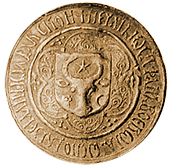AQUA Carpatica
comes deep from the Carpathian Mountains, from the last wild forest of Europe with no agricultural or industrial activity in the surrounding areas.
Embracing Transylvania, the Carpathian Mountains of Romania are unspoiled by civilization, untouched by agriculture or industry.
The springs are deep in a forest of fir, pine, and spruce trees, isolated from human activity.
Reigning supreme over the Carpathians is the Bucovina region a land of savage landscapes with valleys carpeted by wildflowers, strewn with ice-cold brooks jutting between majestic evergreen forest.
The Carpathians offer refuge
to the largest population of large carnivores
in all of Europe – including wolves, brown bears and lynxes.
They hold the largest number of wild bears in Europe: 5000

Water means LIFE. High quality water means a HEALTHIER LIFE.

This is historically true of the waters in the region. AQUA Carpatica is today as it has been for centuries: pure and pristine.
Nothing added. No enhancements. No artificial carbonation or processing.
As natural mineral water should be.
The very first exploration of mineral waters in the Carpathian Mountains was conducted by the Roman Empire (first centuries AC).
1410 – The first reference to Carpathian mineral waters was made as early as 1410, in a donation paper from the Chancellery of Alexander the Good, the king of Moldavia at that time (1399-1431). He donated the Cold Spring of Cosna Village and the Mountains of Suhard to the Sucevita Monastery. The document was written on leather with Cyrillic characters and was preserved until today at the Romanian National Museum of History in Bucharest. (Balan, Th. – “New Documents of Cimpulung”, “Mitropolitul Silvestru” Typography, Cernauti, 1929, p. 8-9).
1608 – The Armenian priest Simeon Dbir Lehati wrote about a mineral water spring in his travelling memoirs in Romania: “the bishops were drinking the fellow loving water from “Vama”. ( Lehati, S.D. – “travelling Memoires and the Nerses Akinian Chronik”, Vienna, 1936, p. 4-7).
1776 – The Austrian general Spleny, the first military Governor of Bucovina, confirmed “the existence and the quality of the mineral water springs from the Dorna [region]” (central Historical Archives of Bucharest – Pack 23, Doc. 1/1776)
1790 – The qualities of the mineral water were described by Belsazar Haquet, a French naturist doctor and historiographer who did research work in the Carpathians, creating also a graphical representation of the region. Below is his opinion about local mineral water: “I drank it myself several times and it had only good effects.” (Haquet, B. – “Journey in the Carpathians”, Nuremberg, 1790).
1806 – The Galician doctor of Bucovina, Ignatz Pluschk, passing through the region, found out that the shepherds used to drink the water of spring as “health giving water”, so he decided that the spring should be exploited. That is how the spring water was bottled and exported to Vienna and Odessa. He also made the first physico-chemical analysis of the water in 1808. (Constantinescu, I. – “From the Bistrita Valley to the Viseului Valley”, Meridiane Publishing House, Bucuresti, 1968, p. 69).
1807 – Subsequent to the request of the Administration of Galicia, the high authorities in Vienna assigned a certain amount of money to these springs to be cleaned and renovated as well as for the balneary establishment to be built in Vatra Dornei. (Archives of Suceava County – Doc. VII/19, 24).
1817 – The Emperor Franz Joseph I of the Austro-Hungarian Empire wrote about Bucovina mineral water in his memories: “it is a ferruginous spring with therapeutical effects and it is appreciated even by the Moldavians. It is the best mineral water spring in the region” (Fr. Joseph I – Emperor of Austria – “Travelling Memoirs from Bucovina”, 1817 – 1823).


